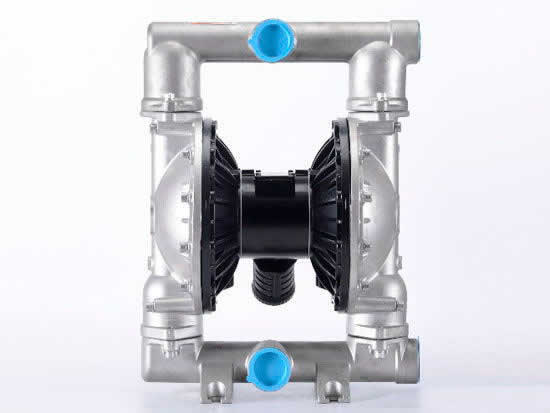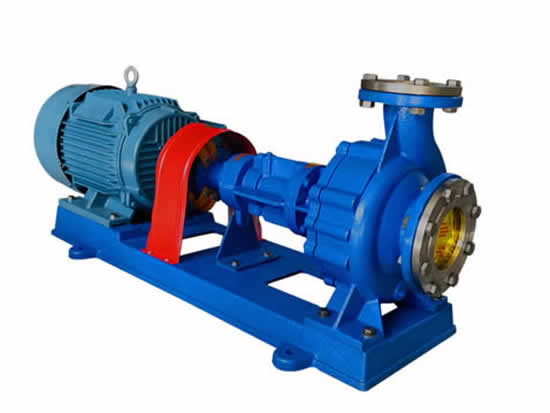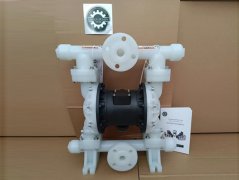Pneumatic diaphragm pump stainless steel material
1. Introduction of stainless steel:
Stainless steel refers to steel that is resistant to weak corrosive media such as air, steam, and water, and chemically corrosive media such as acid, alkali, and salt, and is also called stainless acid-resistant steel. In practical applications, steel that is resistant to weakly corrosive media is often called stainless steel, and steel that is resistant to chemical media is called acid-resistant steel. Due to the difference in chemical composition between the two, the former is not necessarily resistant to chemical media corrosion, while the latter is generally non-corrosive. The corrosion resistance of stainless steel depends on the alloying elements contained in the steel.
All metals react with oxygen in the atmosphere to form an oxide film on the surface. Unfortunately, the iron oxide formed on ordinary carbon steel continues to oxidize, causing the corrosion to continue to expand and eventually forming holes. You can use paint or oxidation-resistant metals (such as zinc, nickel and chromium) for electroplating to protect the surface of carbon steel, but, as everyone knows, this protection is only a thin film. If the protective layer is damaged, the steel below will begin to rust.
Chromium is the basic element for the corrosion resistance of stainless steel. When the chromium content in the steel reaches about 12%, the chromium interacts with the oxygen in the corrosive medium to form a very thin oxide film on the surface of the steel (
Self-passivation film) to prevent further corrosion of the steel matrix. In addition to chromium, commonly used alloying elements include nickel, molybdenum, titanium, niobium, copper, nitrogen, etc., to meet the requirements of various uses for the structure and performance of stainless steel.
Stainless steel is usually divided into:
1. Ferritic stainless steel. Containing 12% to 30% chromium. Its corrosion resistance, toughness and weldability increase with the increase of chromium content, and its resistance to chloride stress corrosion is better than other types of stainless steel.
2. Austenitic stainless steel. It contains more than 18% chromium, and also contains about 8% nickel and a small amount of elements such as molybdenum, titanium and nitrogen. Good overall performance, resistant to corrosion by various media.
3. Austenitic-ferritic duplex stainless steel. It has the advantages of both austenitic and ferritic stainless steel, and has superplasticity.
4. Martensitic stainless steel. High strength, but poor plasticity and weldability.
Second, the role of stainless steel
Stainless steel will not produce corrosion, pitting, rust or wear. Stainless steel is also one of the strongest materials among metal materials for construction. As stainless steel has good corrosion resistance, it can make structural components permanently maintain the integrity of engineering design. Chromium-containing stainless steel also combines mechanical strength and high extensibility, easy to process and manufacture parts, and can meet the needs of architects and structural designers.
316 stainless steel: after 304; the second most widely used steel grade, mainly used in food industry and surgical equipment, molybdenum is added to obtain a special corrosion-resistant structure. Because it has better resistance to chloride corrosion than 304, it is also used as "ship steel". SS316 is usually used in nuclear fuel recovery devices. 18/10 grade stainless steel usually also meets this application level.
3. Stainless steel repair and cleaning
Like other materials exposed to the atmosphere, stainless steel can be dirty.
The effect of rain washing is determined by placing the same slats directly in the atmosphere and in a shed. The effect of manual washing is determined by manually scouring the right side of each slat with a sponge dipped in soapy water every six months. It was found that, compared with slats placed in sheds and places that are not washed, rain washing and manual scrubbing to remove dust and silt on the surface have a good effect on the surface condition. It was also found that the condition of the surface processing also has an impact, and the smooth surface of the slats is better than the rough surface.
Therefore, the washing interval is affected by many factors, the main influencing factor is the required aesthetic standards. Although many stainless steel curtain walls are washed only when cleaning the glass, generally speaking, the stainless steel used for the exterior is washed twice a year.







 +8617731766260/18233754501
+8617731766260/18233754501  fan@saikenpumps.com
fan@saikenpumps.com









 +8617731766260/18233754501
+8617731766260/18233754501 +86-317-8227664
+86-317-8227664
 +8618233754501
+8618233754501